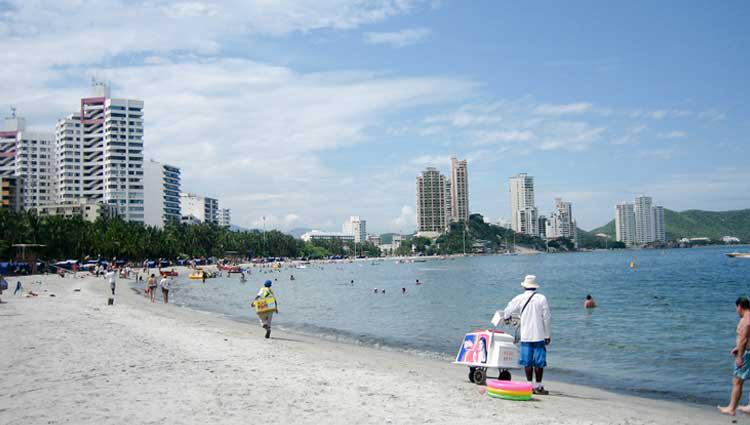Colombia— Sophisticated and Affordable
By Nancy Kiernan, IL Colombia Correspondent
Perfect spring-like weather all year was the first thing that drew me to retire to Medellín, Colombia. I had lived my whole life in the northeast., and I never wanted to see or shovel snow again. While not exactly pioneers, my husband and I are two of the growing number of expats who have discovered that they can live a First-World quality of life in a country that’s only now showing up on fellow retirees’ radar.
Colombia is the second most biodiverse country in the world, so you can easily find a climate and environment that suits your taste. If you want hot and tropical, consider retiring to the lovely Caribbean coastal cities of Santa Marta or Cartagena, where crystal-clear water laps against warm, sandy beaches. For those who prefer more temperate climates, then I suggest my adopted mountain city of Medellín, or anywhere in the “coffee triangle” of Pereira, Armenia, and Manizales, where you are surrounded by lush, green mountain scenery.
Colombia ranks high as a place for healthy living. The great weather allows retirees to enjoy an active, outdoor lifestyle every day of the year. Walking, hiking, horseback riding, swimming, tennis, and even golf will keep your body strong and your spirit young. Pat Turney, a retired nurse from Idaho, refers to Medellín as “a city with a built-in weight management program,” thanks to all the walking she does.
And then, of course, there are the fresh fruits and vegetables that are locally grown and available year round. I’ve lived in Colombia for over five years, and I still haven´t sampled all the exotic varieties of fruit. Diego, a semi-retired and self-confessed foodie from the U.S. Midwest, is also impressed with the fresh and healthy food. “I love having fresh tomatoes all year round,” he says. In the U.S., he was used to waiting until late summer for the bounty, and then eating what he could and canning the rest. “Now I can get fresh vegetables any time of year.”
As we all reach retirement age, access to high quality but affordable healthcare becomes a front-and- center issue. I was a hospital executive in the U.S., so I know healthcare and understand why Colombia ranks so highly in that category. The World Health Organization (WHO) ranks Colombia #22 out of the 191 countries it reviews for quality of care. That surpasses Canada (#30) and the U.S. (#37). Colombia is home to 22 of the top 43 Latin American hospitals.
Retirees are discovering they can stretch their retirement dollars, thanks to the low cost of living and the great exchange rate. The Colombian peso has been hovering around 3,000 to the U.S. dollar since late 2015. Monthly rental costs range from about $300 in small towns to $1,500 and more for a penthouse or a sprawling country home. But in many areas of Colombia, a couple’s total cost of living can be
$2,000 a month or less. I live in Medellín’s upscale neighborhood of El Poblado for 60% less than it cost me back in Maine. My combined utilities (water, waste, gas,electric, trash removal, cable, internet, home phone) average $94 a month.
Some of the best things about retiring in Colombia don’t show up on a survey, though. For example, the warm, welcoming Colombian people. As the expression goes, “You don’t meet a Colombian…you meet the entire family!” Here you’ll always feel part of the community.
Don’t let a lack of Spanish keep you from trying out Colombia. I saw it as an opportunity to learn something new. As word spreads about all that Colombia has to offer, expats are drawn to the metropolitan city of Medellín, especially the neighborhoods of El Poblado, Laureles, and Envigado, as well as to the coastal communities of Santa Marta and Cartagena. A cute two-bedroom, two-bathroom apartment in the Castrapol section of El Poblado currently rents for $750 a month, furnished. If you want to put your toes in the sand, a two-bedroom, two-bathroom apartment, only two blocks back from the beach in the Rodedero section of Santa Marta, goes for $500 a month.

